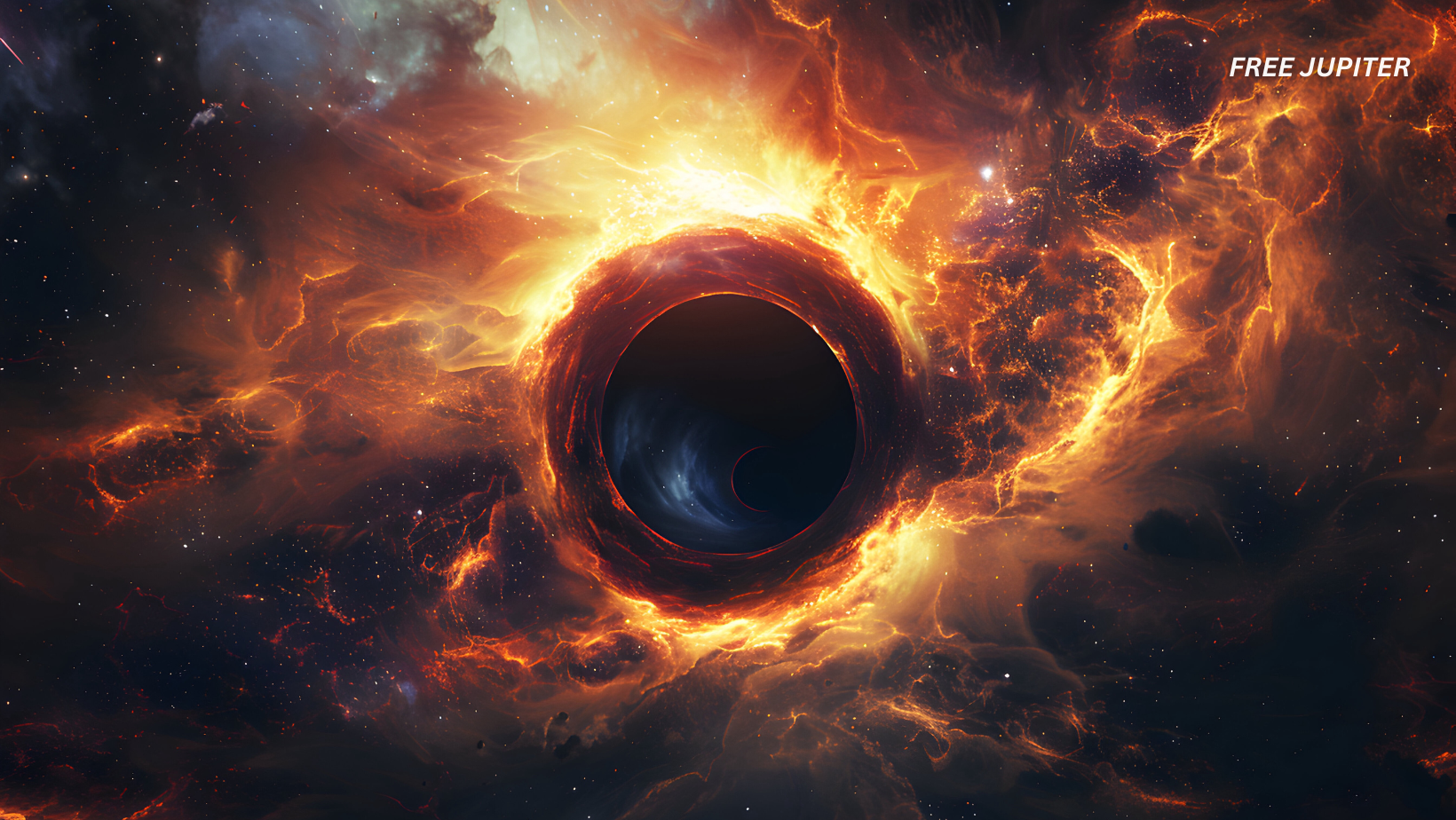Friendly Note: FreeJupiter.com shares general info for curious minds 🌟 Please fact-check all claims—and always check health matters with a professional 💙
Black holes have long captivated the imagination of scientists and the public alike. These cosmic phenomena, where gravity is so intense that nothing—not even light—can escape, represent some of the most extreme environments in the universe. Yet, despite decades of research, black holes remain shrouded in mystery, largely because they are so distant and difficult to observe directly.
However, a recent breakthrough by a team of physicists has brought the enigmatic behavior of black holes a little closer to home—into the laboratory. By successfully simulating an event horizon, the defining boundary of a black hole, researchers have opened a new window into the physics of these extraordinary objects. This achievement not only confirms long-standing theoretical predictions but also offers a promising path toward resolving some of the biggest puzzles in modern physics.
Black Holes: A Cosmic Enigma
Before exploring the laboratory simulation, it’s helpful to understand what black holes are and why they are so fascinating. At their core, black holes are regions where matter has been compressed into an incredibly small space, creating a gravitational field so strong that escape velocity exceeds the speed of light. The boundary marking this point of no return is called the event horizon.
Inside the event horizon lies the singularity—a point where density becomes infinite, and the known laws of physics break down. Because no information can escape from within the event horizon, black holes have historically been studied through indirect observations, such as the behavior of nearby stars or the radiation emitted by infalling matter.
The nearest known black hole to Earth, Gaia BH1, is approximately 1,500 light-years away. In 2019, astronomers captured the first-ever image of a black hole’s event horizon, revealing a dark shadow surrounded by a glowing ring of hot gas—an image reminiscent of the “Eye of Sauron” from popular culture. While this was a monumental achievement, the image was blurry and offered limited insight into the detailed physics at play.
Read more: What Quantum Entanglement Really Reveals About the Universe
The Challenge of Studying Black Holes
Studying black holes directly is extraordinarily difficult. Their immense distance and the extreme conditions near the event horizon make direct measurements nearly impossible with current technology. Moreover, the quantum effects predicted to occur near the event horizon, such as Hawking radiation, are incredibly subtle and faint, making them almost impossible to detect from space.
This limitation has spurred physicists to seek alternative methods to study black holes—methods that do not require traveling across the cosmos. Enter the idea of creating black hole analogues: systems on Earth that mimic certain properties of black holes, allowing scientists to observe and experiment with phenomena that would otherwise be unreachable.
The 2022 Breakthrough: Simulating an Event Horizon in the Lab
In November 2022, a team at the University of Amsterdam led by PhD researcher Lotte Mertens published a groundbreaking paper titled “Thermalization by a synthetic horizon” in Physical Review Research. The researchers reported the successful creation of a synthetic event horizon using a chain of atoms manipulated under carefully controlled conditions.
How Did They Do It?
The team arranged atoms in a one-dimensional chain and controlled the ease with which electrons could jump from one atom to the next. By tuning this electron “hopping” rate, they engineered a boundary within the chain that acted like an event horizon—an area beyond which electrons could not move backward, effectively mimicking the one-way nature of a black hole’s event horizon.
When part of the atomic chain was pushed across this synthetic horizon, the researchers observed a spike in temperature and a faint glow emanating from the horizon region. This glow is significant because it aligns with the predicted Hawking radiation—thermal radiation that black holes are theorized to emit due to quantum effects near the event horizon.
Understanding Hawking Radiation: The Quantum Glow of Black Holes
Stephen Hawking’s 1974 theoretical insight revolutionized how physicists think about black holes. He proposed that black holes are not completely black but emit radiation due to quantum mechanical effects. This radiation arises from the behavior of quantum fields—fundamental entities that permeate all space.
Read more: 3 Black Holes Have Been Caught Eating Massive Stars in New NASA Data
What Are Quantum Fields?
Quantum fields are the underlying fabric of the universe at the smallest scales. They exist everywhere, even in what we perceive as empty space. Particles, such as electrons or photons, can be thought of as excitations or ripples in these fields. Even in a vacuum, pairs of “virtual particles” spontaneously appear and disappear in fleeting moments.
How Does Hawking Radiation Occur?
Near the event horizon, the intense gravitational field affects these virtual particle pairs. Hawking theorized that if one particle falls into the black hole while the other escapes, the escaping particle becomes real and detectable as radiation. This process causes the black hole to lose energy over time, slowly evaporating.
Detecting Hawking radiation from actual black holes has been a monumental challenge because the radiation is expected to be extremely weak. The Amsterdam experiment’s ability to simulate this effect in the lab is a major step forward, providing experimental evidence supporting Hawking’s theory.
Why This Laboratory Simulation Matters
This experiment is more than just a clever trick; it has profound implications for physics. It offers a tangible way to study the interplay between quantum mechanics and gravity—two pillars of modern physics that have long resisted unification.
The Clash of Theories
- General Relativity: Einstein’s theory describes gravity and the large-scale structure of the universe. It explains how massive objects warp spacetime, leading to phenomena like black holes.
- Quantum Mechanics: This framework governs the behavior of particles at the smallest scales. It successfully explains electromagnetism and nuclear forces but does not incorporate gravity.
The quest to unify these theories into a single “theory of everything” is one of the most significant challenges in physics. Hawking radiation sits at the intersection of these realms, involving quantum effects in a gravitational context.
Experimental Evidence and Theoretical Progress
By recreating an event horizon and observing Hawking-like radiation, the Amsterdam team has provided a new experimental platform to test ideas that were previously confined to theoretical physics. This could accelerate progress toward understanding quantum gravity and the fundamental nature of spacetime.
Exploring Other Black Hole Phenomena
Future experiments may simulate other aspects of black holes, such as information loss paradoxes or the behavior of entangled particles near horizons. Each step brings us closer to decoding the secrets locked within these cosmic giants.
Read more: This Cannabis Compound Is Protecting Against Deadly Fungal Infections – Better Than Existing Drugs
The Collaborative Spirit Behind the Discovery
This achievement is a testament to interdisciplinary collaboration. Physicists, quantum engineers, and material scientists worked together, blending expertise to create a synthetic horizon that bridges abstract theory and tangible experiment.
Conclusion: Bringing the Cosmos Closer to Home
While black holes remain distant and mysterious, the ability to simulate their event horizons in the lab marks a transformative moment in physics. It transforms theoretical predictions into observable phenomena and provides a new tool for probing the universe’s deepest mysteries.
As research continues, these synthetic horizons may illuminate the path toward a unified understanding of nature’s laws, revealing how the quantum and cosmic worlds intertwine. The universe, it seems, is becoming a little less mysterious—one atom at a time.










